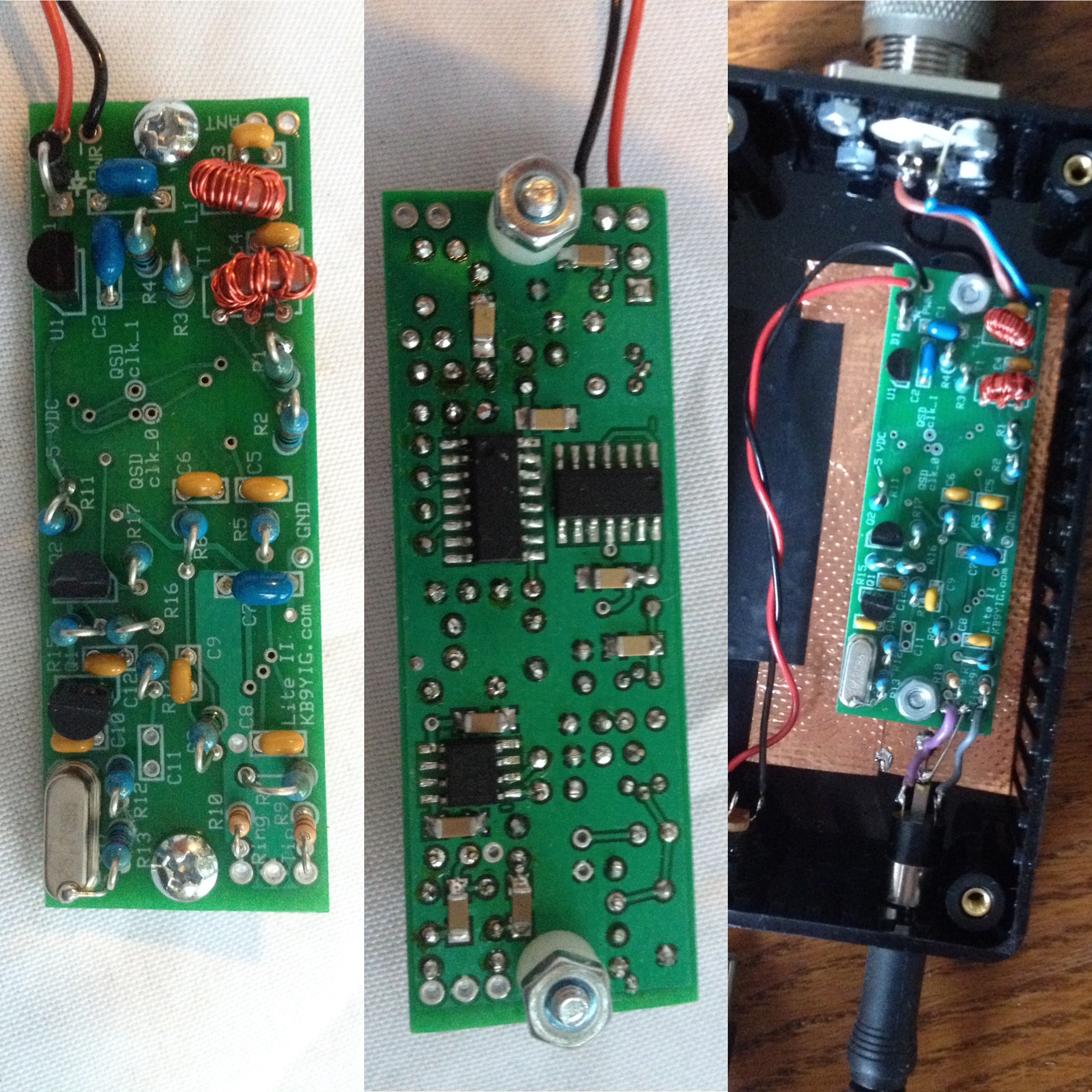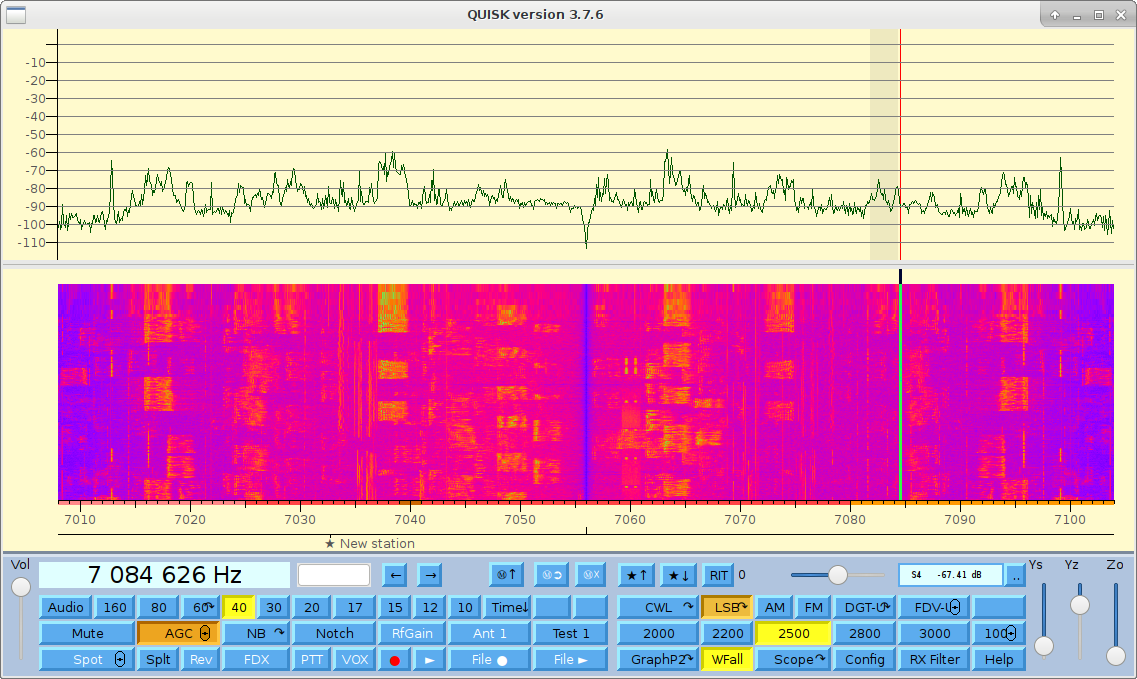It has been about 10 years since I bought a
Softrock lite kit for 40 meters. At the time SDR seemed a
promising technology and hardly any equipment was either
available or very expensive. Buying a 20 dollar kit seemed a
good idea, I could at least get a taste of it. The kit ended up
in a drawer and I forgot about it. Until last week, when a
friend demonstrated a RTL-SDR dongle to me and I got intrigued
again. I build the kit in 2 evenings, it comes with a very good
build description.

Top and bottom side of the PCB (about 2x6 cm) and the added enclosure

Top and bottom side of the PCB (about 2x6 cm) and the added enclosure
It is probably the cheapest way to get a
taste of Software Defined Radio and it's software. This 40m
design by KB9YIG uses a crystal oscillator, a divider and a
mixer to produce I and Q signals which are injected into
your sound card, so it basically is a direct conversion
receiver. Demodulation is done in software.
I have had a try using Quisk on linux. You get a nice waterfall and spectrum display with selectable modes and filters. In order to get things running the configuration file needed a bit of tweaking. Create a file called .quisk_conf.py in your home directory with the following entries:
You might need to adjust the sample rate so it suits your sound card. The higher the sample rate, the more of the 40m band you will see.

Performance is amazing. Good selectivity and audio. Using a full size 40 meter dipole seemed to be no problem for the receiver.
Some Links:
Webshop of WB5RVZ with several softrock kits
Homepage of quisk, a python based multi-platform SDR
I have had a try using Quisk on linux. You get a nice waterfall and spectrum display with selectable modes and filters. In order to get things running the configuration file needed a bit of tweaking. Create a file called .quisk_conf.py in your home directory with the following entries:
import quisk_hardware_fixed as quisk_hardware
softrock_model = "fixed"
fixed_vfo_freq = 7056000
sample_rate = 96000You might need to adjust the sample rate so it suits your sound card. The higher the sample rate, the more of the 40m band you will see.

Performance is amazing. Good selectivity and audio. Using a full size 40 meter dipole seemed to be no problem for the receiver.
Some Links:
Webshop of WB5RVZ with several softrock kits
Homepage of quisk, a python based multi-platform SDR